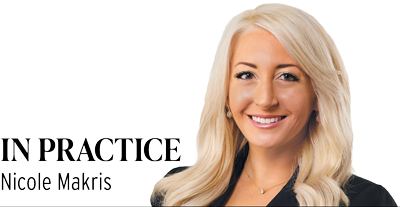Subscriber Benefit
As a subscriber you can listen to articles at work, in the car, or while you work out. Subscribe Now With the opening of the new Marion County Community Justice Center come many exciting upgrades to the courtroom experience. While the move from the City-County Building marks the nostalgic end of an era, the CJC offers modern and innovative features that will serve as valuable assets to the family law trial attorney.
With the opening of the new Marion County Community Justice Center come many exciting upgrades to the courtroom experience. While the move from the City-County Building marks the nostalgic end of an era, the CJC offers modern and innovative features that will serve as valuable assets to the family law trial attorney.
Getting there
Located at 675 Justice Way in Indianapolis, the CJC has 71 courtrooms. Family Division courts are located on floors one through three. Free parking is available in Lot D, or Lot C for ADA parking. There is also a drop-off and pick-up location in front of the entrance to the building. You should plan to arrive early for your hearing to allow yourself time to locate your courtroom and to set up before your hearing begins. Hearing rooms are open 30 minutes prior to the start of a session so that counsel and parties may prepare any technology needed for the presentation of their cases. Because there are no longer court offices, you will be able to “check in” with a staff member inside the courtroom.
Attorney ID cards
The first step in preparing for your court appearance at the CJC is to apply for your new attorney ID card. The Indianapolis Bar Association website provides helpful links to request a new attorney ID card and to the recorded webinar of the Community Justice Center Town Hall for all introductory information about the CJC. Your new attorney ID card allows you to bypass security in the lobby by scanning your ID. Additionally, your ID card provides access to copiers, attorney-client conference rooms and the attorney workroom on the fourth floor.
Finding your courtroom
When you enter the CJC, there are display screens on the right showing the current and upcoming cases and their corresponding courtrooms. You can also access the day’s docket online at http://infax.com/docket/in-marion/?p=1104-403. Kiosks for assistance locating your courtroom can be found below the docket monitors as well as on each floor. If you have trouble locating your courtroom assignment on the docket monitors, there is a help desk in front of the clerk’s office in the lobby to assist attorneys and litigants. Court staff also may be contacted via email or phone. One email address is available for each court that will reach every staff member of the court.
Presentation of exhibits
Anyone who has seen my office knows that I strive to operate my practice entirely paperless, so I am especially excited about the shift to digital evidence presentation. The 2020 experience led us to adapt to the virtual presentation of exhibits in remote hearings. Now, hard copies of exhibits are only needed as a courtesy to the judicial officer hearing the matter or for use of the ELMO document camera. For exhibits that you wish to enlarge for the viewer, the document camera has an impressive zoom capability. A demonstration at the IndyBar Bench Bar Conference showed the camera’s ability to zoom in on the back of a $5 bill to clearly read the names of the states on the Lincoln Memorial.
The NOMAD CZ (credenza style) is the evidence presentation system for nonjury courtrooms. A link to the online training for the NOMAD CZ can be found on the IndyBar website, and appointments can be made with court staff to test out the equipment before a hearing.
Attorneys have the option of using the built-in desktop of the NOMAD CZ or connecting their own devices. If you choose to use the NOMAD system, you can provide your exhibits via flash drive. If you decide to bring your own laptop or tablet, you should be sure that you have the correct HDMI adapter if needed for your particular device. One HDMI cable is already connected to the system. If you wish to present evidence from the counsel table, you will need to bring your own HDMI cable. The credenza also has two electrical outlets and USB charging ports to ensure your devices remain charged during the hearing.
A helpful feature of this system is the option of easy annotation. By touching the monitor, you can circle text or mark on an exhibit for emphasis. Exhibits should continue to be filed 48 hours in advance of a hearing to ensure the court receives them on time.
Record exchange
To request a recording of a hearing, you simply need to place an order with the date and time of the proceeding. For a public proceeding, there is no fee to request a recording. If you are requesting a recording of a confidential proceeding, you will need to request authorization from the judicial officer. As with the livestream of court proceedings, publication is not permitted. For appellate purposes, you will still need to request a transcript.
Conclusion
Most of my early years in practice were spent in the City-County Building, and saying goodbye to its courtrooms is bittersweet. From the Saturdays of law school trial practice to my first cases after passing the bar, it will always be a place of special memories. I look forward to making many new memories in the CJC and seeing you all in the attorney workroom.•
Nicole Makris is a partner at Cohen & Malad LLP. Opinions expressed are those of the author.
Please enable JavaScript to view this content.
